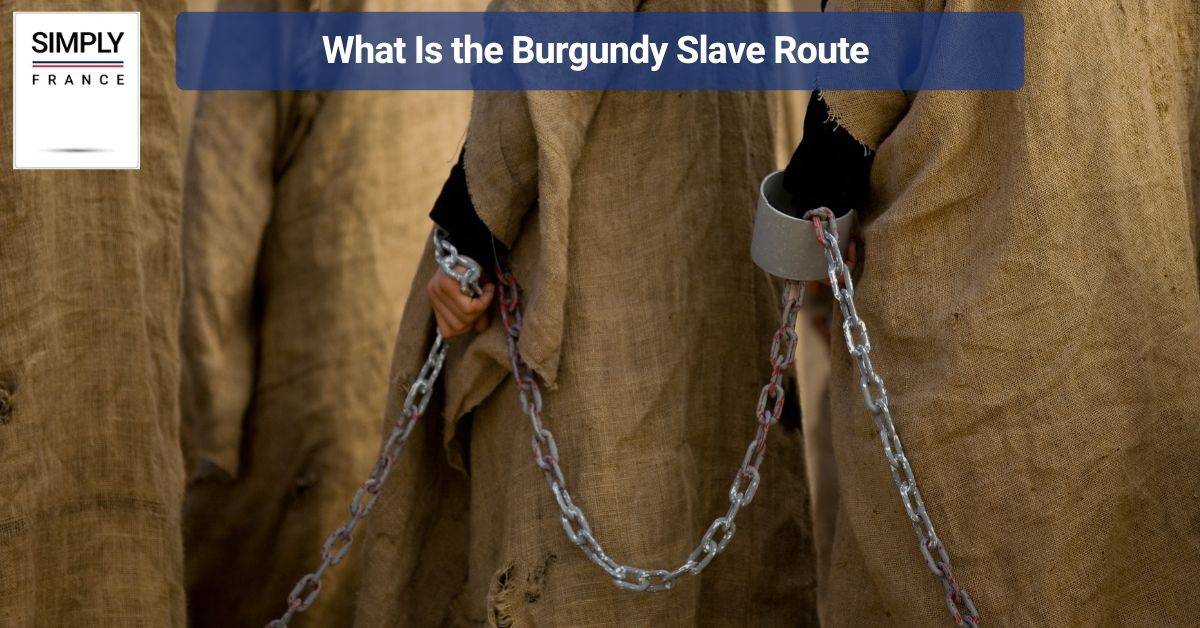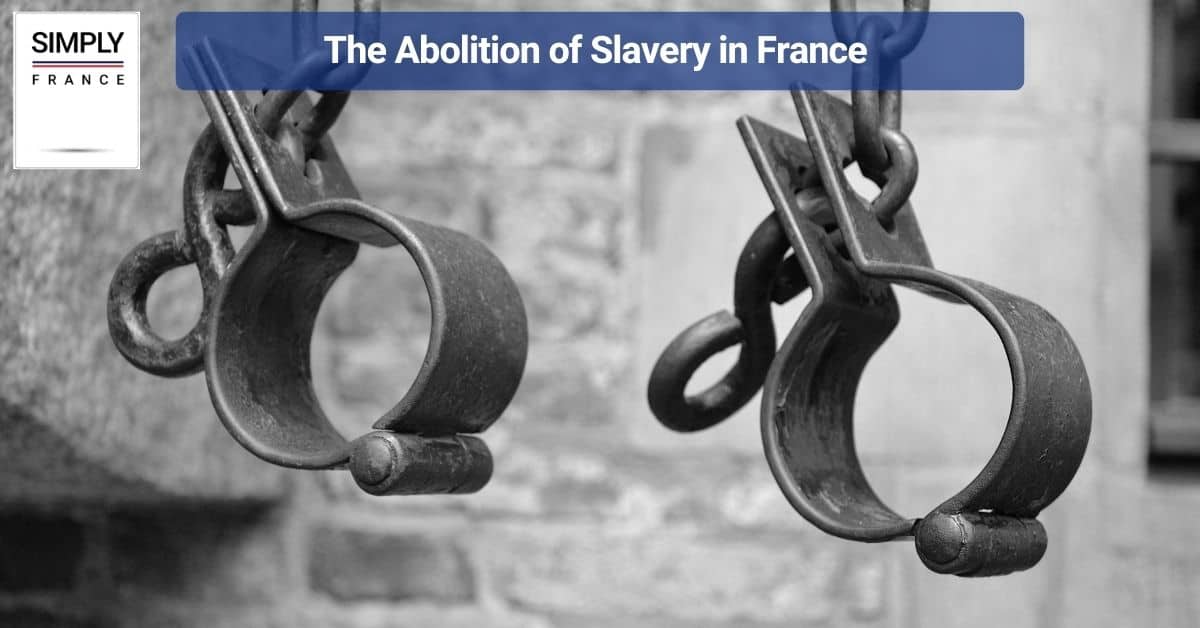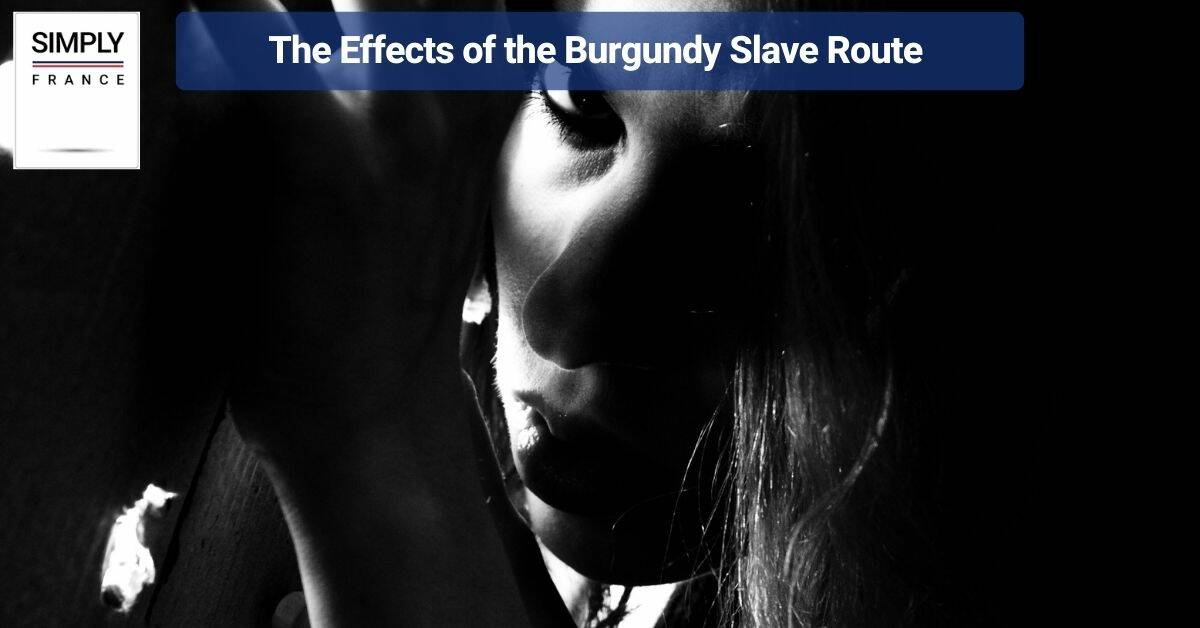Did you know that slavery once existed in France? The Burgundy Slave Route is a guide to the abolition of slavery in France. This route takes you through the places where slaves were trafficked, sold, and transported. Learn about the effects of slavery on the region and see some amazing places along the way.
What Is the Burgundy Slave Route
Between the 15th and 19th centuries, the Burgundy region of France was a major center of the slave trade. Thousands of Africans were brought to Burgundy to be sold as slaves, and many of them were put to work in the region’s vineyards. As a result, the Burgundy Slave Route has come to be known as one of the most significant slave routes in European history.
The first slaves in Burgundy were brought from Africa in the early 15th century. They were sold to landowners and winemakers, who put them to work in their vineyards. The demand for slaves increased in the 16th century, as the wine industry expanded. Many of the slaves who were brought to Burgundy during this period came from Senegal and Gambia. By the 17th century, an estimated 5,000 Africans were being enslaved in Burgundy each year.
The slave trade continued until the early 19th century when it was finally abolished. However, the legacy of the Burgundy Slave Route lives on in the region’s wine industry. Today, there are a number of initiatives that aim to raise awareness about the history of slavery in Burgundy and its impact on contemporary society.

How Did the Slave Trade Work in Burgundy
The Burgundy Slave Route in France commemorates the victims of the transatlantic slave trade. It begins in the port city of Le Havre, where slaves were brought from Africa to be sold, and ends in the city of Dijon, where they were auctioned off.
From the 15th to the 19th centuries, the Burgundy Slave Route was a vital part of the French slave trade. It began in the port city of Nantes, where slaves were loaded onto ships bound for the Caribbean colonies. From there, they were taken to Saint-Domingue (now Haiti), where they were sold at auction.
The route then continued to Martinique and Guadeloupe, before finally returning to France. In all, it is estimated that over 500,000 slaves were transported along the Burgundy Slave Route. The abolition of slavery in France in 1848 brought an end to this horrific trade, but its legacy continues to be felt today.
Along the way, there are a number of sites that bear witness to the suffering of those who were forced into slavery, including a memorial to the Revocation of the Edict of Nantes, which expelled the Huguenots from France. The route is a reminder of the atrocities that were committed during the slave trade and serves as a reminder of the need to respect human rights.

The Abolition of Slavery in France
On February 4, 1794, the National Convention of France voted to abolish slavery in all French colonies. This event marked a turning point in the history of human rights, as it was one of the first times that a major world power had taken steps to end the practice of slavery.
The decision to abolish slavery was not an easy one, and it was met with fierce resistance from colonial powers and slave owners. However, the Convention persevered, and in May of 1794, they passed a law that officially ended slavery in all French territories.
The abolition of slavery in France was an important step forward for human rights, and it inspired other nations to follow suit. In the years that followed, many other countries would abolish slavery, though it would sadly still remain a reality in too many parts of the world.

Places to Visit Along the Burgundy Slave Route
There are a number of places to visit along the Burgundy Slave Route, which runs through France, Switzerland, and Belgium. In France, visitors can explore the Musée de l’Homme in Paris, which includes a section on the history of slavery, or the Château de Fontainebleau, which was once a castle used by slave traders.
Here are just three of the many important stops on this important historical trail.
Auxerre
First, visitors should make a stop in Auxerre, where slaves were bought and sold at the marketplace. The slave market was active for many years, and Auxerre was an important hub in the slave trade. Today, there is a memorial to the slaves who were bought and sold here, and it is a powerful reminder of the cruelty of the slave trade.
Chalon-sur-Saone
Next, visitors should travel to Chalon-sur-Saone, where many slaves were brought before being shipped downriver to Lyon. In Chalon, there is a museum dedicated to the history of slavery, as well as a monument to the abolition of slavery. This is a great place to learn more about this dark period in history and to pay tribute to those who suffered under slavery.
Lyon
Finally, no visit to the Burgundy Slave Route would be complete without a stop in Lyon. Lyon was one of the biggest centers for the slave trade in all of Europe, and it is estimated that tens of thousands of slaves passed through here over the course of several centuries.
Today, there is a memorial to the slaves who were traded in Lyon, as well as a museum that tells their stories. This is a moving place to learn about the suffering caused by slavery and to honor those who endured it.

The Effects of the Burgundy Slave Route
The Burgundy Slave Route was a major trade route for the transportation of slaves from Central and Eastern Europe to France. The trade began in the early 1400s and continued until the early 1600s. Estimates suggest that as many as 30,000 Slavic people were transported to France during this period. The majority of those transported were women and children, who were sold into domestic servitude or used as grooms and wet nurses.
Many of the men who were transported were put to work in the mines or on the farms of the Burgundy region. The slave trade had a significant impact on the demographics of France, as well as on the economy and culture of the country. It is estimated that, by the early 1600s, there were as many as 500,000 slaves in France. This represented approximately 5% of the population at that time.
The slave trade also contributed to the growth of the French economy, particularly through the development of new colonies in Africa and South America. In addition, the slave trade had a profound impact on French culture, introducing new ideas and customs from Africa and South America into France.

Tip When Visiting
The Burgundy Slave Route is a collective name for the places and sites in the region that commemorate the history of the slave trade. The route begins in the city of Dijon, where slaves were brought from Africa to be sold, and extends to the village of Gevrey-Chambertin, where they were auctioned off. Today, the route is marked by a series of plaques and memorials that offer visitors a chance to learn about this dark period in history.
When visiting the Burgundy Slave Route, there are a few things to keep in mind.
First, many of the sites are located in remote areas, so it is important to have a good map. Second, some of the memorials can be emotionally charged, so be prepared for an emotionally intense experience. Finally, take advantage of the resources available at each site, such as brochures and audio guides.
Best Time To Visit?
The best time to visit the Burgundy Slave Route is during the summer months. The weather is warm and sunny, and the vineyards are in full bloom. However, it’s important to plan your trip in advance, as the region can be quite crowded during peak season.
If you’re looking to avoid the crowds, consider visiting during the shoulder season (April-May or October-November). You’ll still be able to enjoy the beautiful scenery, but you’ll have a better chance of finding hotel availability and cheaper airfare. Keep in mind that many businesses in the region close down for the winter, so if you’re planning a trip during that time, be sure to check opening times in advance.
No matter when you decide to visit, the Burgundy Slave Route is sure to offer a fascinating glimpse into France’s dark history. Following these tips, you can make sure that your visit to the Burgundy Slave Route is both educational and respectful.

In conclusion
The Burgundy Slave Route is a memorial to the slaves who were traded in France during the 1400s-1600s. The route begins in Dijon and extends to Gevrey-Chambertin. There are several memorials and plaques located along the route that commemorate the history of the slave trade.
The best time to visit the Burgundy Slave Route is during the summer months when the vineyards are in full bloom. However, be prepared for an emotionally intense experience as some of the memorials can be quite moving.
Plan your trip in advance, as many businesses in the region close down for winter.


